(2) Step 2 – learn about thai cuisine
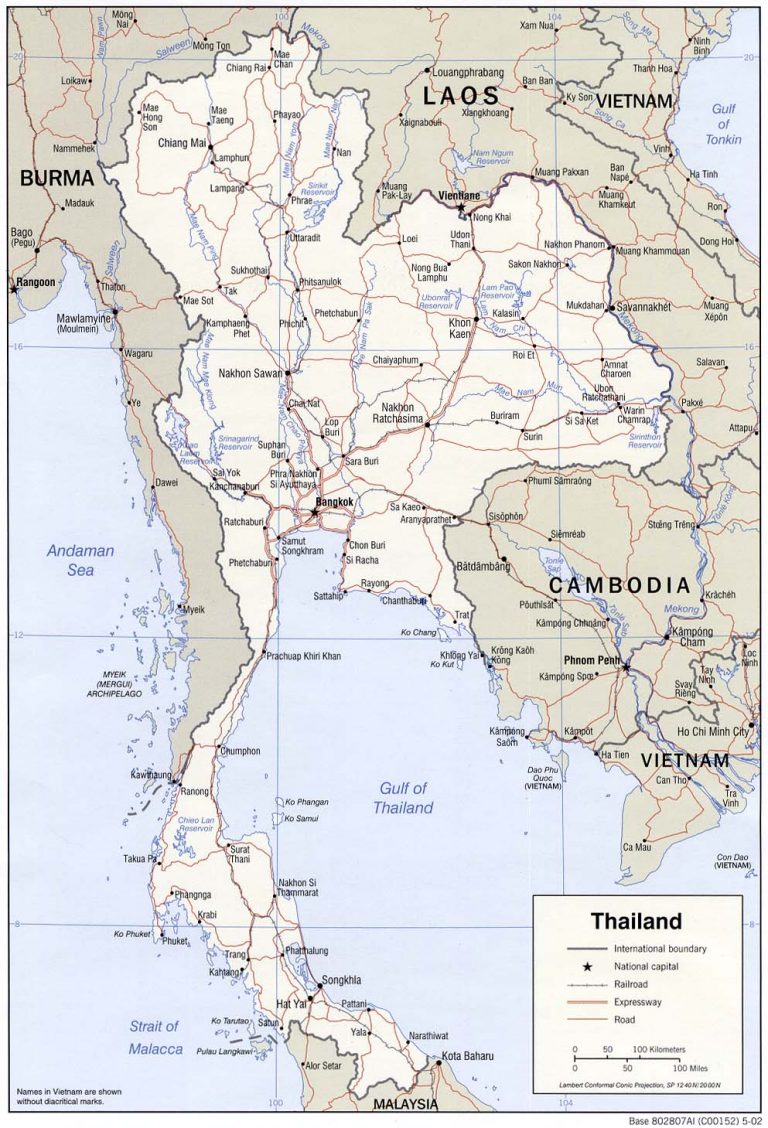
Thai culinary history: Thai food was heavily influenced centuries ago by people who emigrated from southern China into modern day Thailand. From this Szechuan base, Buddhist monks introduced Indian flavours and cooking techniques, while the major influence in the south, was from the Muslim states. Later, with trade from the Dutch and the entry of Portuguese missionaries, European foods were introduced into the country. Thai food focuses on the 5 tastes, sweet, sour, bitter, salty and spicy.
There are four distinct regional variations on Thai cuisine. They are broken down into North, North-eastern, Central, and Southern. Northern cuisine is typically less spicy, sticky rice is preferred, and favourite flavourings include ginger, turmeric, and tamarind. North-eastern cuisine has been influenced by Laos. The food is spicy, sticky glutinous rice is preferred, and since meat beef and pork were historically scarce, protein was provided by freshwater fish and shrimp, which were often fermented, so they could be eaten at a later date. Central cuisine is known for its preference of Jasmine rice and royal cuisine. Royal cuisine, a type of cooking that originated in the royal palaces, consists of more elaborate meals and is considered an art form. Southern cuisine uses the coconut more than the other regions, and seafood is heavily utilized.
FOODS THAT ORIGINATED IN SOUTH EAST ASIA:
Areca nuts, Bananas/Plantains, Cinnamon, Coconuts, Cucumbers, Eggplants, Grapefruit, Mangoes, Melons, Millets, Nutmeg/Mace, Okra, Pears, Plums, Rice, Sugarcane, Taro, Tea, Yams
Tools used in the making of Thai cuisine
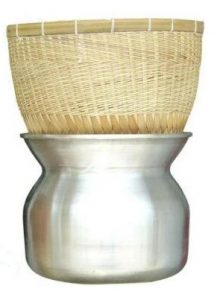
Bamboo basket sticky rice steamer: Glutinous rice is soaked in water, drained and added to the bamboo basket where it is steamed from the water below.
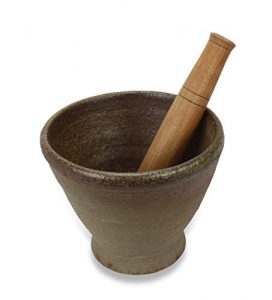
Mortar and pestle: A clay mortar and pestle is used to make the iconic green papaya salad, while granite ones are often used to make pastes for curries.

Papaya salad shredder. The papaya salad shredder is used to break up the green papaya into small sticks.
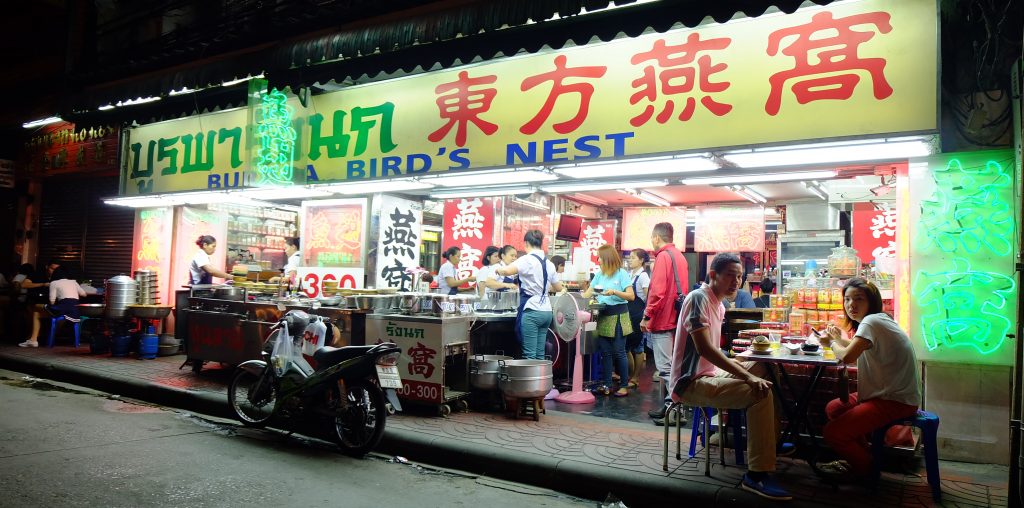
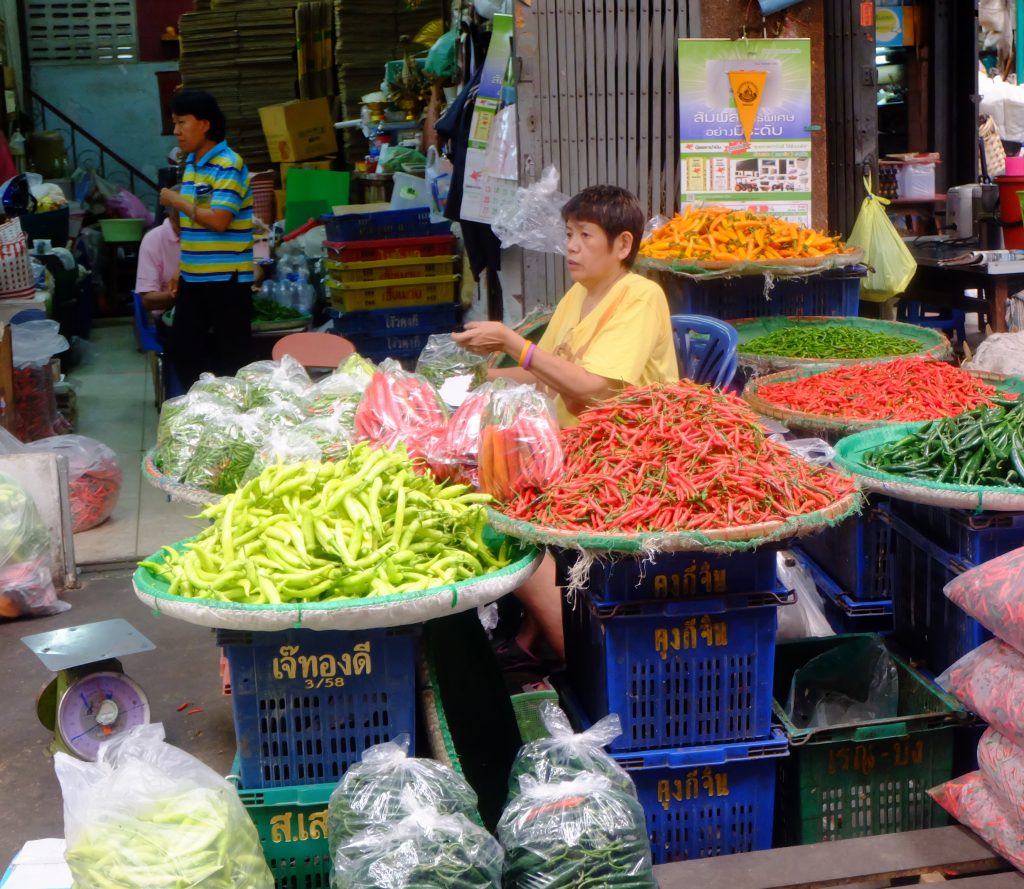
A restaurant located in Chinatown and outdoor market in Bangkok
5 essential ingredients in Thai cuisine
Allium vegetables, such as shallots, onions, scallions, and garlic, either raw or cooked are used extensively in Thai cuisine.
Coconut milk can be found in many Thai curries, soups, and desserts. It is extracted from finely grated, mature, coconut flesh and squeezed into a rich milk.
Fish sauce in Thailand is called nam pla, it is used both in cooking and can also be found on the table as a condiment as it adds a deep umami flavour.
Chilies, not only add heat, but flavour to Thai dishes. Common types include, Bell pepper, Thai prik num, Spur chilli (Thai prik chi fah), Thai yellow chili (Prik Pon Luang), and Jinda Chili (Prik Sod).
Fresh herbs are commonly found in Thai dishes, one of the most commonly used is Basil (horapha and ka prao types), cinnamon is an essential ingredient in many Thai soups, as are cilantro, and mint.
Preparation, Table set up, Serving order, and Etiquette
Preparation: Noodles for the dishes can be prepared prior to cooking, make sure to rinse with cold water to stop the cooking process.
Table set up: In Thailand, the spoon is the primary utensil, people generally use a fork to manipulate food or to eat non rice dishes. Chopsticks are only used for standalone noodle dishes and never for rice dishes. Knives are not usually present on the table, as all the food is already cut up into bite sized pieces.
Serving order: There is no set serving order, dishes are usually brought out to the table as they become ready for consumption.
Etiquette: It is considered friendly to top up other people’s glasses. It is considered rude to take large amounts of one dish, add small amounts to your rice, until everybody has taken a portion. Don’t worry about getting enough food, because you can refill your plate as many times as you would like.
(3) Step 3 – pick your dishes
Since I’m not a chef, I’ve scoured the internet and found some of the best recipes for you to cook. The ones I chose are not too difficult, authentic, and tasty. Cook safely and enjoy!
Pick one or more meat salad
Larb is a meat salad that originated from the Northeast region of Thailand. It is made with chicken (larb gai) or beef (larb neur), with vegetables, however, the most popular is made with minced pork (larb moo). It is usually eaten as a part of a set of larb, papaya salad and sticky rice.
- Larb moo (pork) – Meat salad with pork and herbs.
- Larb neua (beef) – Meat salad with beef and herbs.
- Larb gai (chicken) – Meat salad with chicken and hers.
Pick one or more curry
Most Thai curries have a base consisting of lemongrass, galangal, shrimp paste, and other aromatics pounded into a smooth paste. Other ingredients are then added to make each curry unique.
- Red curry with chicken and pumpkin – spicy coconut milk based red curry
- Yellow curry with chicken – uses turmeric and curry powder for a rich, savoury flavour and yellow colour.
- Green curry with fish – uses fresh green chillis and is bright and herby from fresh cilantro root and kaffir lime leaves.
- Masman Curry – is mild in heat and loaded with spices found in Indian cuisine like coriander and cardamom.
Pick one or more noodle dish
Thai noodles are made principally just from rice flour and water. They come in a variety of sizes, but wide and thin are the most common.
- Pad thai – Rice noodles, beansprouts, scallions, red onion, bean curd, egg and peanuts.
- Pad se ew – Broad noodles, Chinese broccoli and egg with thick soy sauce.
- Pad kee mao – Spicy. Broad noodles, chili, onion, bell pepper, egg and basil leaves.
Pick one or more types of rice
There are two types of rice commonly eaten in Thailand, these include Jasmine rice which is boiled and sticky rice which is steamed. Steaming softens the individual grains, resulting in a dish that can be used for both dinner and desserts.
- Jasmine rice – has a sweet and nutty flavour
- Sticky rice – has a gummy chewy texture
Pick one or more soup
- Tom yam goong – Prawn, spicy and tangy soup with lemon grass and lime leaves
- Tom kha gai – Chicken, in coconut milk spicy and tangy soup with galangal, lemon grass and lime leaves topped with roasted chill
Pick one or more salad
- Som tam thai (green papaya salad) – Green Papaya, spicy and tangy salad with tomato, long bean, garlic, dried shrimp and peanuts
- Yam ma moung (green mango salad) – Green Mango, Spicy and Tangy salad with pork and Shrimp
- Plah goong (grilled prawn salad)– Grilled Prawns with sliced fresh lemon grass and lime leaves, spicy and tangy salad
Pick one or more dessert
Pick one or more non-alcoholic beverages
- Cha yen – Consists of black tea brewed with boiling water using a cloth strainer, plus some sweetened condensed milk, served over ice with sugar and a little evaporated milk on top
- Cha ma-nao – Lime ice tea.
Pick one or more alcoholic beverages
- Singha beer – Pale gold colour; sweet, grainy, malty nose with a light citrus note
- Ya dong – is made by infusing lao khao, or rice alcohol with botanicals.
Recommended Combinations
Combo 1 – Phuket special
Green curry with fish, pad thai, jasmine rice, tom yam goong, plah goong, fruit salad, Cha ma-nao, yah dong.
Combo 2 – one night in Bangkok special
Larb neua, masman curry, pad kee mao, jasmine rice, tom yam goong, som tam thai, fruit salad, cha yen, ya dong.
Combo 3 – Chiang mai special
Larb moo, red curry with chicken and pumpkin, pad se ew, sticky rice, tom kha gai, yam ma moung, mango with sticky rice, cha ma-nao, Singha beer.
Combo 4 – wat the pho special
Larb gai, yellow curry with chicken, pad thai, jasmine rice, tom yam goong, plah goong, mango with sticky rice, cha yen, Singha beer.
Combo 5 – Tuk tuk special
Larb neua, green curry with fish, pad kee mao, sticky rice, tom kha gai, yam ma moung, plah goong, fruit salad, cha ma-nao, Singha beer.